Michèle Pagel
Reisst die Hütte ab!
06 May - 02 Jul 2023
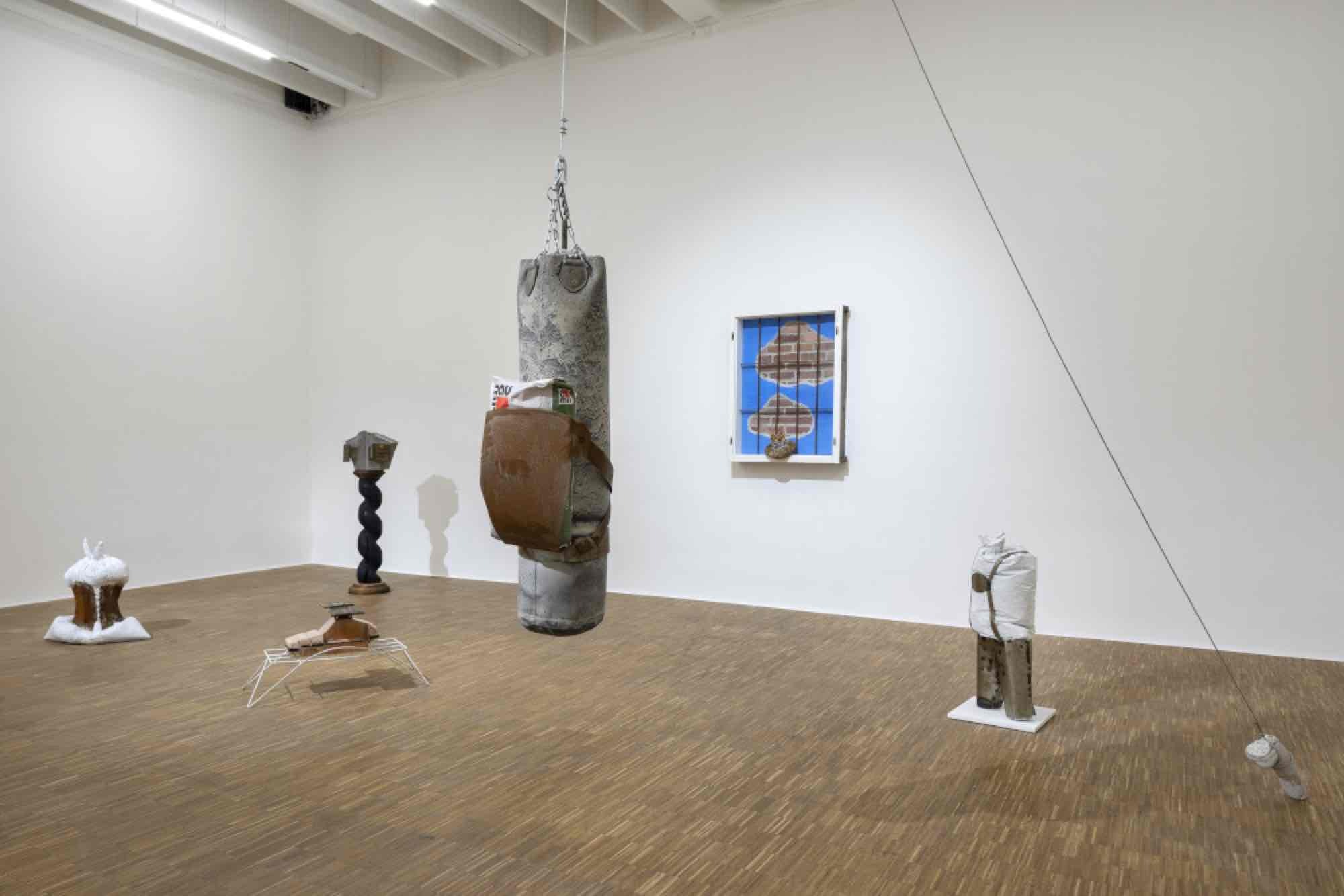
Exhibition view Michèle Pagel, Salzburger Kunstverein 2023, photo: Andrew Phelps, © Salzburger Kunstverein.

Exhibition view Michèle Pagel, Salzburger Kunstverein 2023, photo: Andrew Phelps, © Salzburger Kunstverein.

Exhibition view Michèle Pagel, Salzburger Kunstverein 2023, photo: Andrew Phelps, © Salzburger Kunstverein.
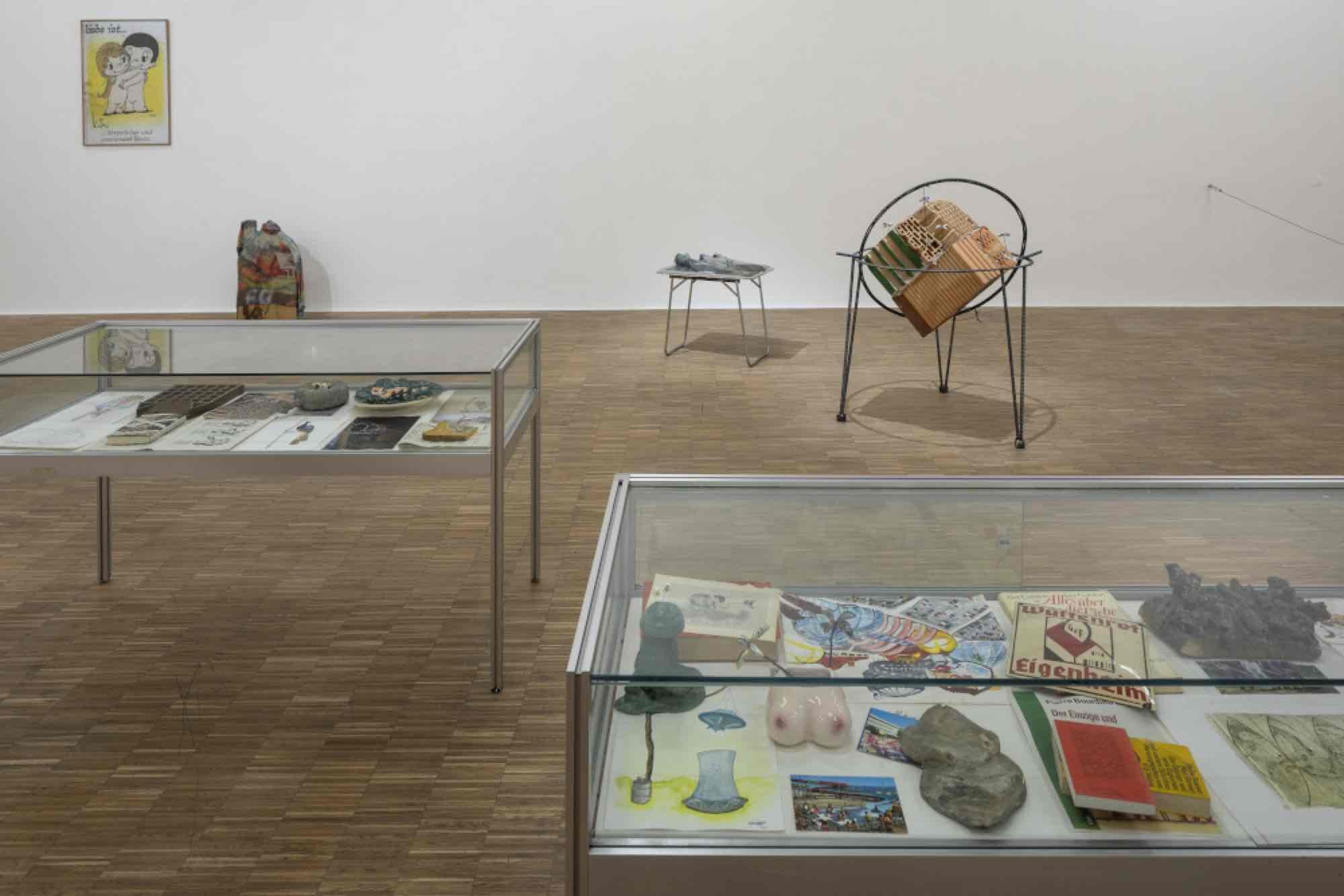
Exhibition view Michèle Pagel, Salzburger Kunstverein 2023, photo: Andrew Phelps, © Salzburger Kunstverein.
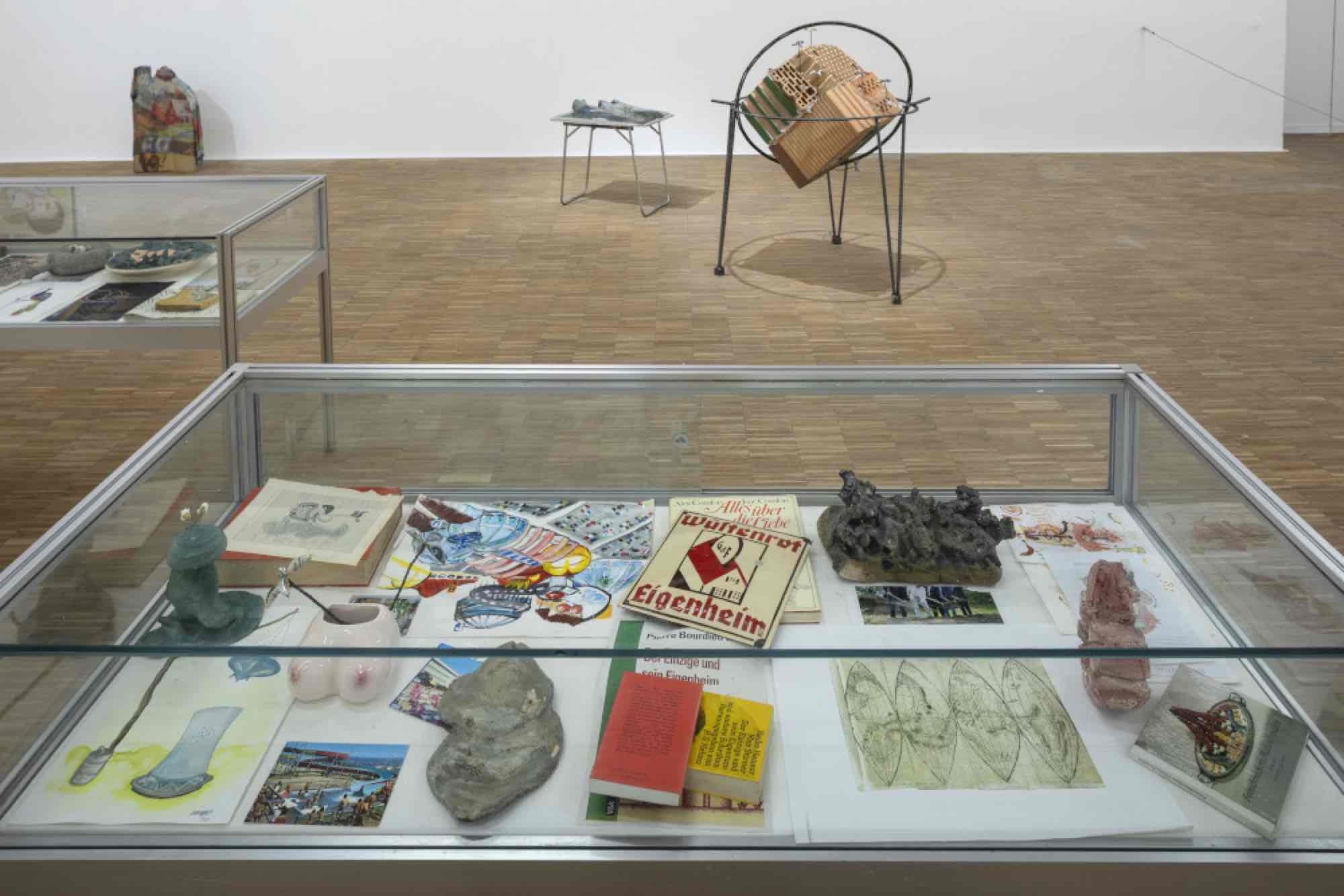
Exhibition view Michèle Pagel, Salzburger Kunstverein 2023, photo: Andrew Phelps, © Salzburger Kunstverein.

Exhibition view Michèle Pagel, Salzburger Kunstverein 2023, photo: Andrew Phelps, © Salzburger Kunstverein.

Michèle Pagel, Sky Is the Limit oder: Maschine brennt, 2023, brick, steel, 300 x 20 x 20 and 70 x 10 x 40 cm, courtesy of the artist and Galerie MEYER*KAINER. Exhibition view Michèle Pagel, Salzburger Kunstverein 2023, photo: Andrew Phelps, © Salzburger Kunstverein.
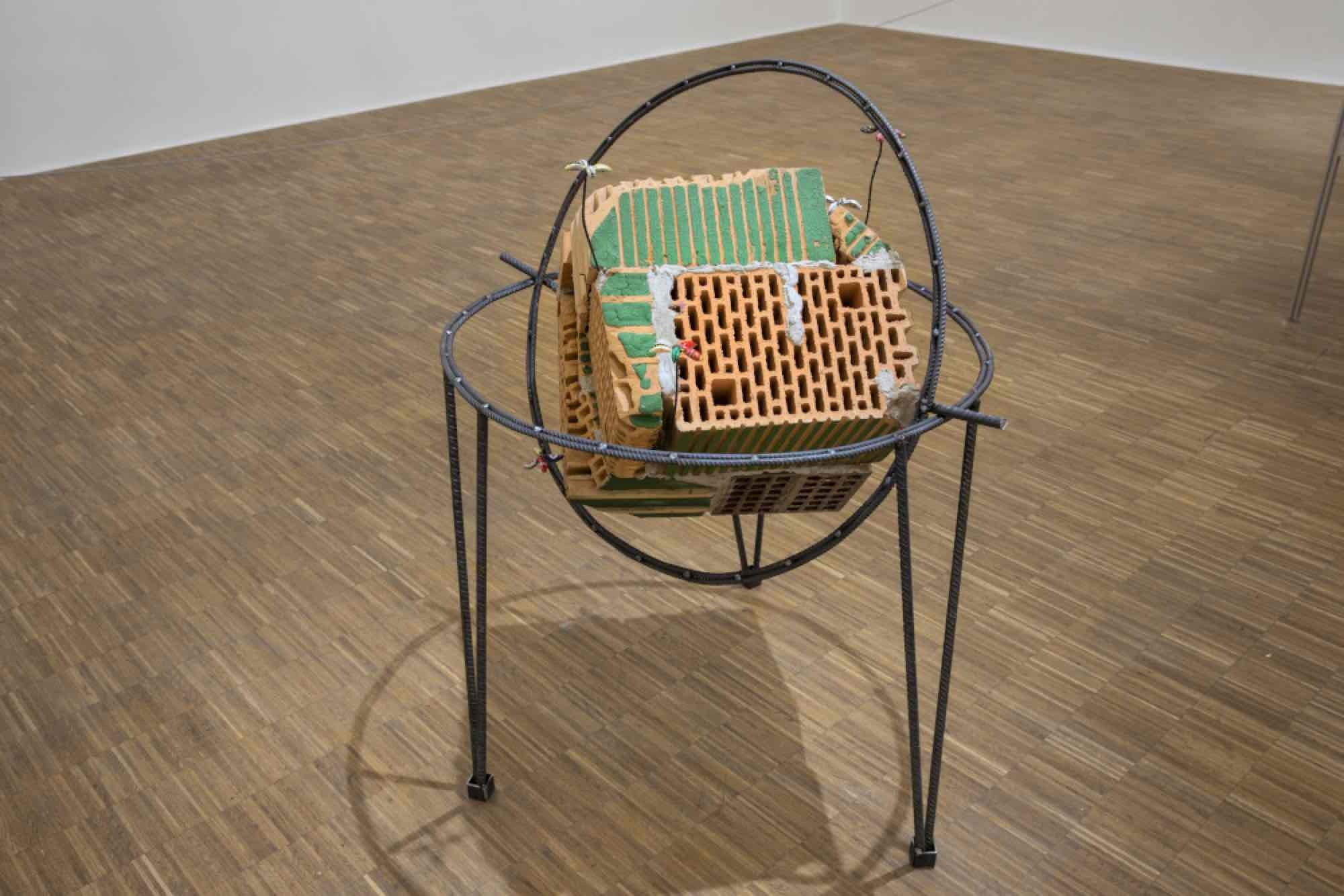
Michèle Pagel, Wüstenrot oder: Planet B, 2023, steel, brick, 90 x 90 x 90 cm, courtesy of the artist and Galerie MEYER*KAINER. Exhibition view Michèle Pagel, Salzburger Kunstverein 2023, photo: Andrew Phelps, © Salzburger Kunstverein.
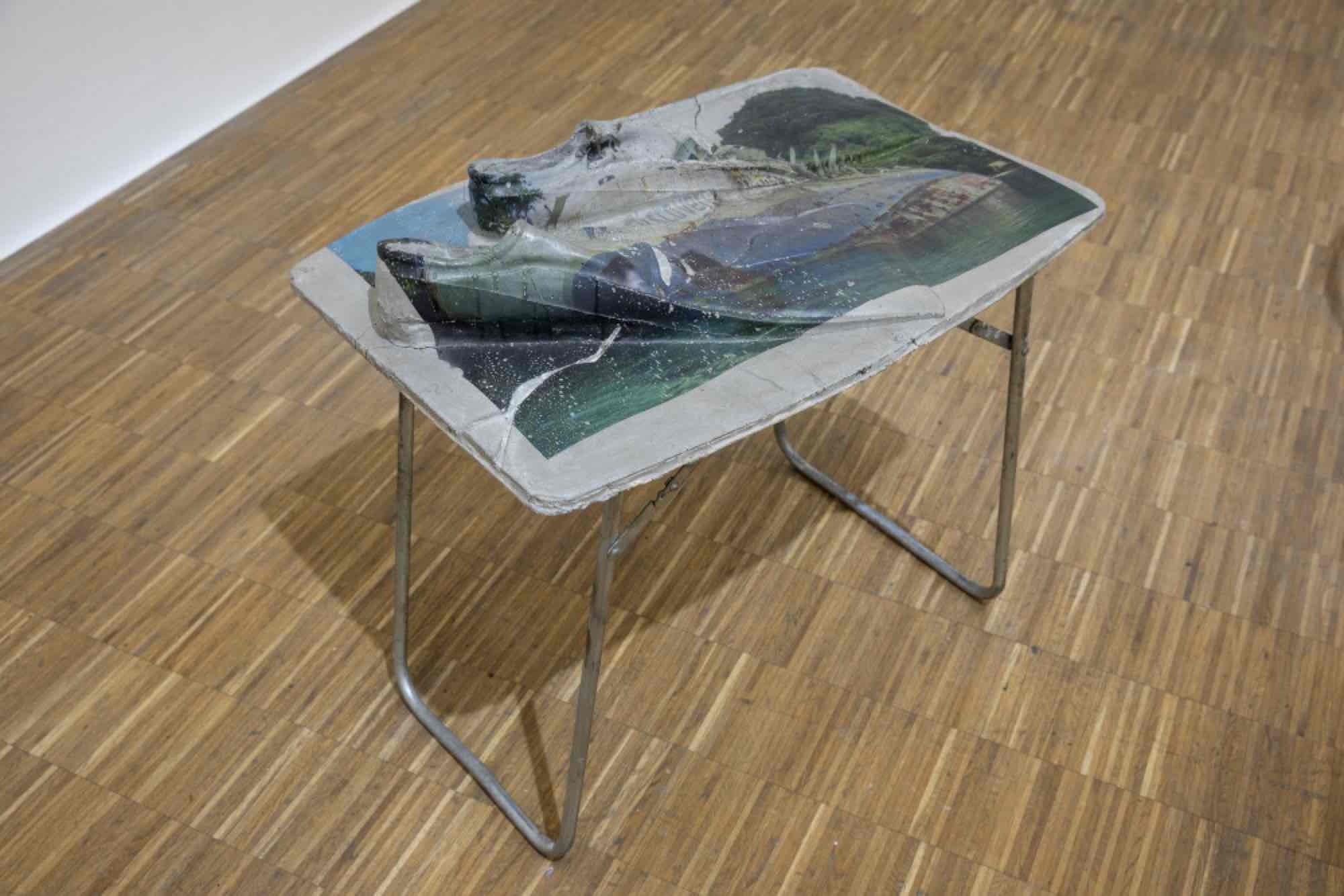
Michèle Pagel, Lantschern, Gatschen, Quilk, 2014, concrete, steel pipes, 40 x 50 x 70 cm, courtesy of the artist and Galerie MEYER*KAINER. Exhibition view Michèle Pagel, Salzburger Kunstverein 2023, photo: Andrew Phelps, © Salzburger Kunstverein.
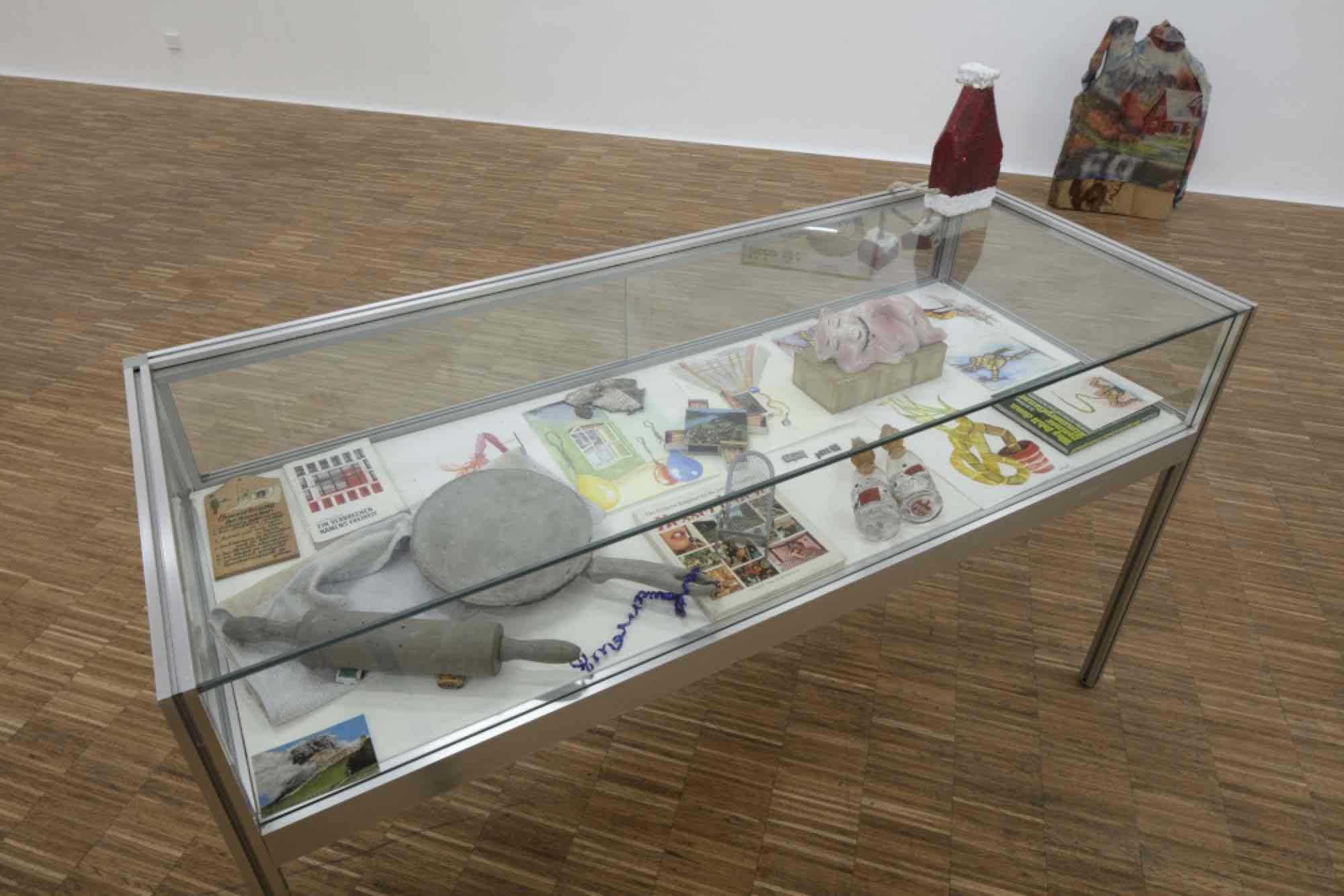
Exhibition view Michèle Pagel, Salzburger Kunstverein 2023, photo: Andrew Phelps, © Salzburger Kunstverein.
Vienna-based artist Michèle Pagel uses a formal language where she recreates the shapes of the everyday world as they seem to be assembled. What is within these things, their dark potential or their beauty, she turns outwards and makes it more obvious. Resilient against any transfiguration of content, her sculptures speak a clear language. They point to the obstructive incompatibility of our habitual life worlds, to the heavy burden of cultural role models, to the profiteers of everyday constructs and to their resulting losers. Metal, ceramics, bricks, concrete, the building materials of the physical world are transposed and redistributed for this purpose, modularly combined and conceptually intertwined so consistently that no doubt remains: This hut has to go.
Michèle Pagel. Reisst die Hütte ab!
Text by Patricia Grzonka
Michèle Pagel’s exhibition “The hut has to go!” deals with a familiar theme, which could be shortened to “home builder's dream disaster.” On the one hand, this begins with the domestic nuclear family idyll: a father and two possible children, each male and female. The father is represented by a punching bag with a baby carrier, whose weight is held up by a concrete penis anchored in the floor. The “children” as white trash bags, sit on the floor, a small “Sparkasse” car serves as a toy: a fast vehicle with gullwing doors made of two bank door handles. Interrupted by four display cases (equipped with Pagel’s paintings, graphics, small sculptures, literary cross-references and found objects), we find on the other side of the spatial setting an arrangement that contrasts the realm of the domestic with a global, or rather a “heavenly” aspect: On an oversized mobile suspended from the ceiling on a three- meter-long axis, an angel balances five smaller objects: a half or three-quarter moon, which would best be described as a disk―which is, after all, how we perceive it―as well as several smaller figures containing antennas. These are flying objects of a completely different kind, namely space debris that has long since taken an eternal place in the firmament. This exploitation and commercialization of space by earthly entrepreneurs meets here with a still dominant belief in religious or romantic notions of redemption in the afterlife. A cubic globe built of hewn bricks, simply the rotating globe at its pole, provides the frame of reference. The two spheres of the domestic and the global are on opposite sides of the spectrum, but they belong together in terms of content, they are like Ying and Yang and represent the visible and the rear side, just as the moon has a visible and a “dark” side.
As a sculptor, Michèle Pagel works with hybrid methods, combining and varying found materials and her own sculptural processes with craft techniques such as ceramics. Also, for “The hut has to go!” she elaborated a set of objects made of industrially produced bricks, as they are used in house construction. On display, however, are also some sculptures that were created recently and thematically also revolve around the domain of the domestic. However, the sculptures always retain a raw look and the authenticity of the material. The children in folkloristic clothing, for example, are made of tin legs in combination with a concrete bag for the torso, whose volume, slightly bent in the area of the “shoulders,” is reminiscent of slumped, lifeless bodies.
Essential to many of Pagel’s works is an overlap in content through bringing together various objects and ideas. Body parts are replaced by functions. The “White Trashbag #2 (Infantin)” that is, the white garbage bag, is the child, its “tip” is the hairstyle. Thus, Pagel works with a figurative and metonymic superimposition of meanings and images, exaggerating typical things or representing them literally. We easily recognize in this small group a very specific “type” of family. Particularly bitter, because it presumably corresponds to reality, is the fact that a representative of the mother is missing. This particular space of the domestic, characterized by a home-builder mentality, manages without a female element because it is a man’s world anyway.
Michèle Pagel’s thematic series can be understood like social scene portraits: Sometimes it is the office world, visualized by personalized houseplants, other times a series of bird figures, which in quirky combinations - a parrot with a typewriter - point to conventions and everyday working worlds. In her work, often committed to a DIY aesthetic, ideas of the commonplace collide with the fantasies of he individual. Pagel’s works often also refer to very concrete problems and address abuse, sexism, or classist themes and, more generally, also deal with environmental and capitalist issues.
And this brings us back to the house builder scenario at the Salzburger Kunstverein. For all the cynicism that appears in the works, there is also a certain philanthropy or perhaps an analytical view in them. Here, too, the frame of reference is set much wider on society than is apparent at first glance. It extends to the forced policy of building houses and financing them through a „Bausparvertrag“, a regional form of bank contract, which was used after the Second World War, not only in Austria but here in particular, to tie young families to the home and the workplace. Above all, chaining through a contract to a financial institution - in Pagel’s case, the savings bank- is representative of a form of control by the state. The individual ties himself or herself to a fixed job through a building/savings- contract, receives the longed-for house in return, but will then usually also submit to conventional family planning, which brings with it the usual side effects such as a satellite dish, a car with a carport, a leisure subscription to a sports club, and so on. The French sociologist Pierre Bourdieu examined this mixture of neoliberalist everyday life in his study “Der Einzige und sein Eigenheim,” the title of which is a paraphrase of the economics-critical philosopher Max Stirner’s “Der Einzige und sein Eigentum.”
Bourdieu’s conclusion here is unsurprising: people do not become happier by being bound to so-called “compulsory contracts,” on the contrary, buying a house often means financial overload and social isolation, not to mention the ecological disasters that follow as a result of urban sprawl and increased CO2 emissions. Michèle Pagel addresses such problematic issues and also names things with clear language: The hut has to go!
Michèle Pagel. Reisst die Hütte ab!
Text by Patricia Grzonka
Michèle Pagel’s exhibition “The hut has to go!” deals with a familiar theme, which could be shortened to “home builder's dream disaster.” On the one hand, this begins with the domestic nuclear family idyll: a father and two possible children, each male and female. The father is represented by a punching bag with a baby carrier, whose weight is held up by a concrete penis anchored in the floor. The “children” as white trash bags, sit on the floor, a small “Sparkasse” car serves as a toy: a fast vehicle with gullwing doors made of two bank door handles. Interrupted by four display cases (equipped with Pagel’s paintings, graphics, small sculptures, literary cross-references and found objects), we find on the other side of the spatial setting an arrangement that contrasts the realm of the domestic with a global, or rather a “heavenly” aspect: On an oversized mobile suspended from the ceiling on a three- meter-long axis, an angel balances five smaller objects: a half or three-quarter moon, which would best be described as a disk―which is, after all, how we perceive it―as well as several smaller figures containing antennas. These are flying objects of a completely different kind, namely space debris that has long since taken an eternal place in the firmament. This exploitation and commercialization of space by earthly entrepreneurs meets here with a still dominant belief in religious or romantic notions of redemption in the afterlife. A cubic globe built of hewn bricks, simply the rotating globe at its pole, provides the frame of reference. The two spheres of the domestic and the global are on opposite sides of the spectrum, but they belong together in terms of content, they are like Ying and Yang and represent the visible and the rear side, just as the moon has a visible and a “dark” side.
As a sculptor, Michèle Pagel works with hybrid methods, combining and varying found materials and her own sculptural processes with craft techniques such as ceramics. Also, for “The hut has to go!” she elaborated a set of objects made of industrially produced bricks, as they are used in house construction. On display, however, are also some sculptures that were created recently and thematically also revolve around the domain of the domestic. However, the sculptures always retain a raw look and the authenticity of the material. The children in folkloristic clothing, for example, are made of tin legs in combination with a concrete bag for the torso, whose volume, slightly bent in the area of the “shoulders,” is reminiscent of slumped, lifeless bodies.
Essential to many of Pagel’s works is an overlap in content through bringing together various objects and ideas. Body parts are replaced by functions. The “White Trashbag #2 (Infantin)” that is, the white garbage bag, is the child, its “tip” is the hairstyle. Thus, Pagel works with a figurative and metonymic superimposition of meanings and images, exaggerating typical things or representing them literally. We easily recognize in this small group a very specific “type” of family. Particularly bitter, because it presumably corresponds to reality, is the fact that a representative of the mother is missing. This particular space of the domestic, characterized by a home-builder mentality, manages without a female element because it is a man’s world anyway.
Michèle Pagel’s thematic series can be understood like social scene portraits: Sometimes it is the office world, visualized by personalized houseplants, other times a series of bird figures, which in quirky combinations - a parrot with a typewriter - point to conventions and everyday working worlds. In her work, often committed to a DIY aesthetic, ideas of the commonplace collide with the fantasies of he individual. Pagel’s works often also refer to very concrete problems and address abuse, sexism, or classist themes and, more generally, also deal with environmental and capitalist issues.
And this brings us back to the house builder scenario at the Salzburger Kunstverein. For all the cynicism that appears in the works, there is also a certain philanthropy or perhaps an analytical view in them. Here, too, the frame of reference is set much wider on society than is apparent at first glance. It extends to the forced policy of building houses and financing them through a „Bausparvertrag“, a regional form of bank contract, which was used after the Second World War, not only in Austria but here in particular, to tie young families to the home and the workplace. Above all, chaining through a contract to a financial institution - in Pagel’s case, the savings bank- is representative of a form of control by the state. The individual ties himself or herself to a fixed job through a building/savings- contract, receives the longed-for house in return, but will then usually also submit to conventional family planning, which brings with it the usual side effects such as a satellite dish, a car with a carport, a leisure subscription to a sports club, and so on. The French sociologist Pierre Bourdieu examined this mixture of neoliberalist everyday life in his study “Der Einzige und sein Eigenheim,” the title of which is a paraphrase of the economics-critical philosopher Max Stirner’s “Der Einzige und sein Eigentum.”
Bourdieu’s conclusion here is unsurprising: people do not become happier by being bound to so-called “compulsory contracts,” on the contrary, buying a house often means financial overload and social isolation, not to mention the ecological disasters that follow as a result of urban sprawl and increased CO2 emissions. Michèle Pagel addresses such problematic issues and also names things with clear language: The hut has to go!
